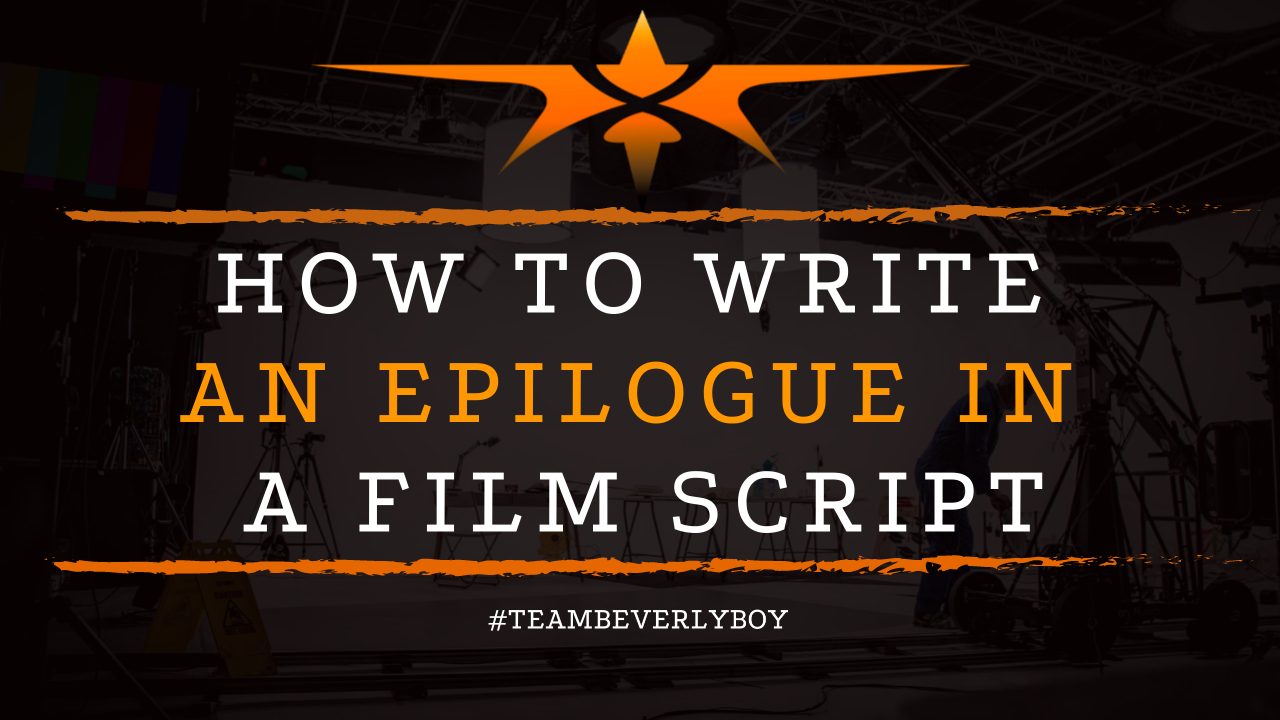
How to Write an Epilogue in a Film Script
When writing a fiction screenplay, many filmmakers and screenwriters seek to perfect the process of learning how to write an epilogue in a film script. The epilogue is a useful literary device that can be incorporated into your screenplay to reveal the fate of your characters. While working to wrap up any loose ends that were left behind as a result of the ending of the story. While this is an incredibly useful technique in screenwriting, learning how to write an epilogue in a film script is something that many novice screenwriters find challenging.

Why Use an Epilogue?
An epilogue is useful as a means of showing what happens to your characters after the story wraps. While you might find writing an epilogue into your script something that is fun and challenging to accomplish.
It’s important that you not use the epilogue as a crutch for otherwise poor storytelling. The epilogue should never replace the denouement or the falling action of your story.
Filmmakers choose to write the epilogue into their script. As a way of providing a sneaky insight into the potential of a sequel film. In fact, in films where the filmmaker already has a second film planned, an epilogue is almost guaranteed.
However, the use of an epilogue is not to take the place for good storytelling! Make sure that your script still fulfills the obligations of a succinct story. And that any epilogue you provide is merely insight into the potential for another future story.
Your epilogue is useful if it:
- Helps to further develop your character.
- Hints at the potential for a sequel film.
- Emphasizes a key point of the story.
- Fulfills an added level of world-building within your story.
How to Write an Epilogue in a Film Script
Now that you know what the purpose of the epilogue is and why you might consider adding an epilogue to your script. Let’s take a look at how to write an epilogue in a film script.
Your decision to write an epilogue in your film is based largely on first knowing why you want to include this device in your storytelling.
Once you’ve decided why to include the epilogue, writing it into your script is a matter of a few steps as follows:
- Show passage of time in your script. To add space between the final action of your story. And the epilogue taking place.
- Reveal a bit of information that wasn’t previously included in the story. This might be a new perspective, some new piece of information, or some detail. That goes along with the climax of the story and references it in a new light.
- Provide your audience with a unique POV from your character. Once you’ve shown the passage of time, allow the narrator or omniscient third person narrator to showcase this new way of thinking.
Formatting
Writing the actual epilogue into your script is a matter of formatting. The epilogue is often shown as a quick montage that brings about the robust new details in the end. After a few seconds of rolling credits.
To announce the epilogue in your script, consider the use of a scene heading such as:
[INT/EXT]. [LOCATION] – [DAY/NIGHT]
EPILOGUE
Follow this with your action items, and the narrative that will be included. If the narrative is shown as a voice over from a particular character or a POV of that character, use the following:
Character V.O.
Or announce that you’re going to use a character point of view to deliver the epilogue.
As you can see, learning how to write an epilogue in a film script is all about planning the purpose and value of the epilogue followed by simple formatting to announce the scene.


